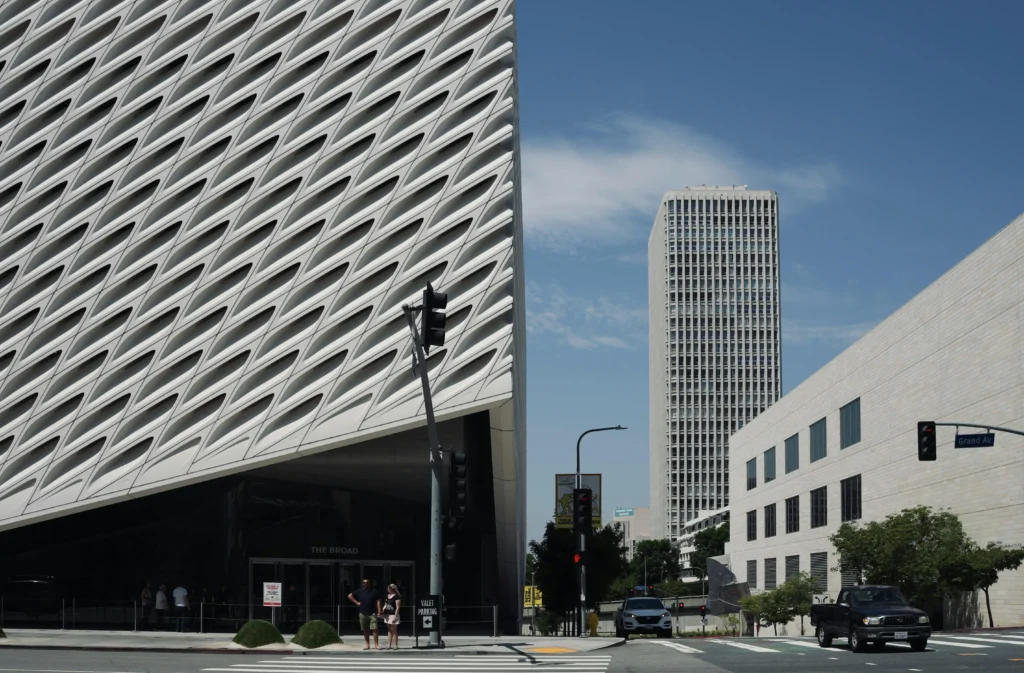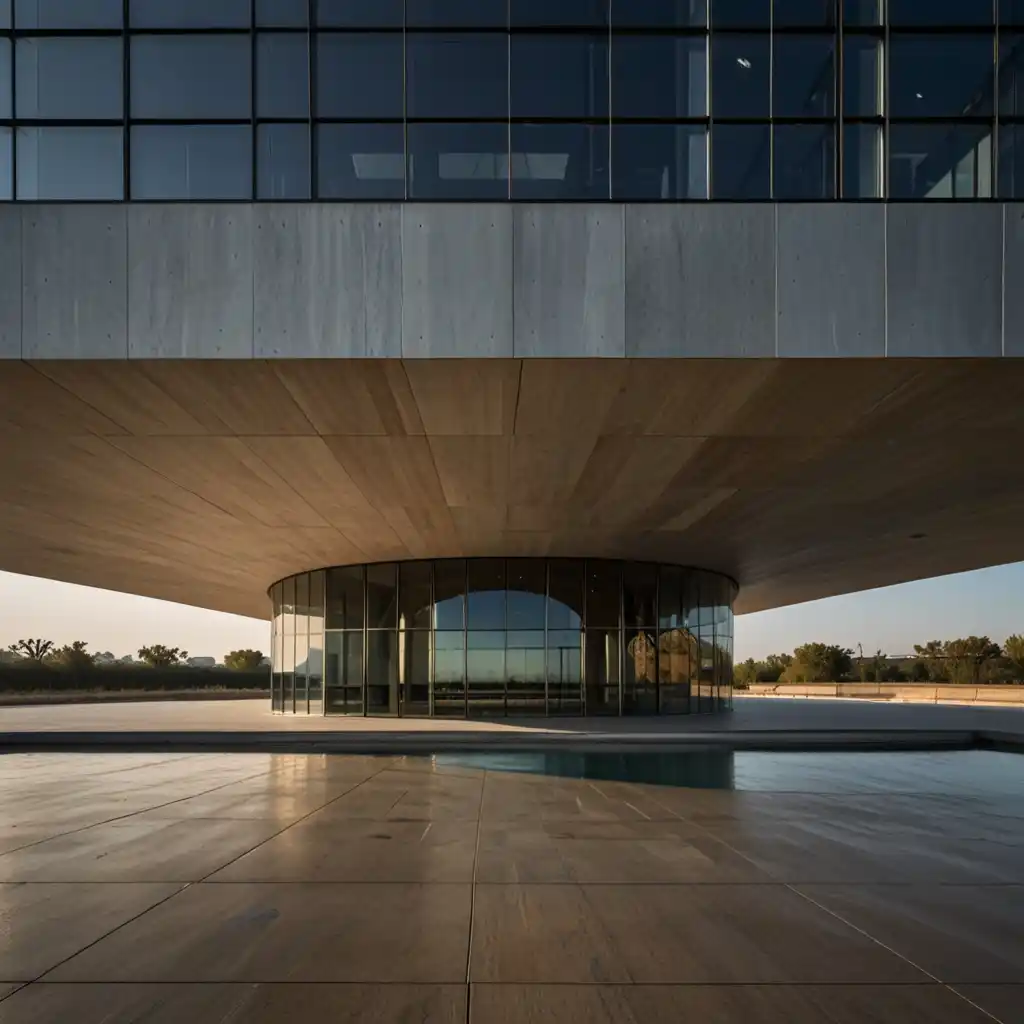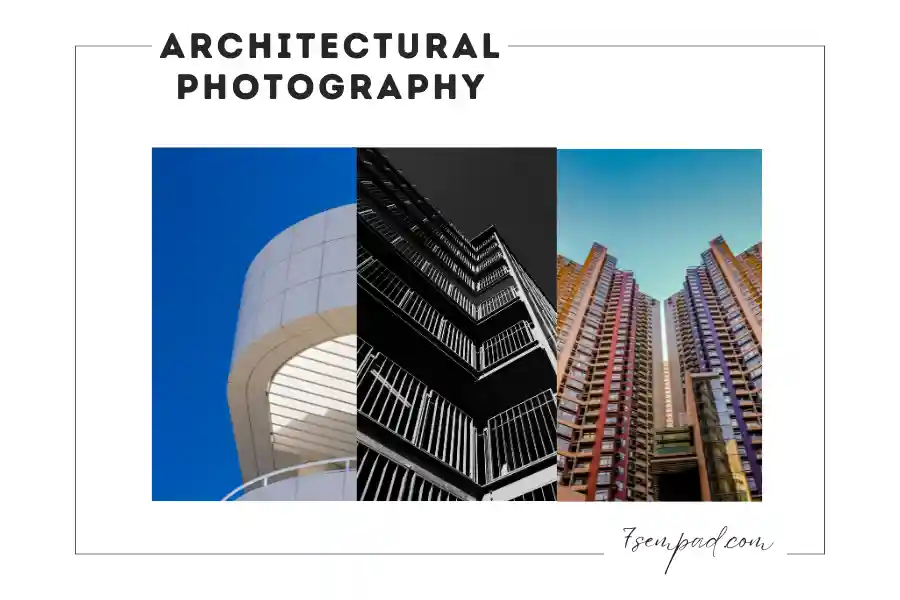Architectural photography is a style of photography that involves shooting buildings and other structures to show their architecture, beauty and purpose. Almost anything that is manmade could be the subject of architectural photography. This includes ruins, older structures, skyscrapers, and bridges. The main focus is to capture the architectural elements of the subject, and often times, reveals details not easily noticed by the naked eye. In this post, we will discuss architectural photography, its importance, some techniques and tips for photographers.

What Architectural Photography is all about
Photographing Form and Function
Architecture photography is about more than just photographing buildings. It’s about capturing the form and function of the structure. You need to consider what the architect was thinking and the reason the building was erected. A classical temple with perfect symmetry or a modern office skyscraper with clean lines are telling a story and architectural photography aims to capture it.
Details and Textures
Details are very important when it comes to architectural photography. Common subjects include patterns, textures and materials found on the structure. Some photographers take extreme close ups of carved details, others highlight the light and shadows on a wall or capture the texture of a stone wall. Including these details makes the photographs more interesting.
Light and Shadows
Light is also a very important factor in architectural photography. How light hits the structure can have a dramatic effect on the overall feel of the building. Many photographers take pictures during different times of the day to capture the light and shadows properly. The golden hours just after sunrise and before sunset are very common because the light is soft and warm and highlights the architectural elements.

Importance of Architectural Photography
Historical Record
Architectural photography can be very useful for historical record of structures. Buildings and landmarks that are threatened by destruction or neglect can be captured for future generations to see their beauty and historical importance. In a way, photographs can reveal a era2s culture and society which the building represents.
Useful for Architectural Research
Photography is vital for architecture students or practitioners alike. They can analyze (or learners can study) the building s design elements, construction materials and spatial relationships. Extreme close ups of carved details can be studied to analyze craftsmanship and artistry. Photographs can be used as reference for architects looking for inspiration in existing structures.
Real Estate and Marketing
Architectural photography is a must in the real estate business. Properties are presented in their best light possible to attract clients or potential tenants. A well composed photograph can emphasize the property s best features and make it more attractive than competing structures.
Improving Real Estate and Marketing
High architectural photography is of importance in real estate. It contributes to display the property in the best way to attract customers or tenants. The composition of images can enhance the property’s best features and make it more attractive than competing properties.

Tips for Architectural Photography
Selecting Equipment
Although great composition is vital, selecting the best equipment for your real estate photography can improve your work greatly. A DSLR or mirrorless cameras with wide angle lens is commonly used to take architectural photos since it gives you the opportunity to fit the building into a smaller portion of the camera’s sensor. A tripod is essential to ensure stability when shooting in low light or slow shutter speeds.
Understanding Composition
In composition, architectural photography has many aspects to consider. Below are some methods you can use:
- Rule of Thirds: Divide the frame into thirds both horizontally and vertically. The subject is usually positioned on the lines or at the intersection of the lines to create balance and interest.
- Leading Lines: Leading lines are lines within the frame that lead to the subject. It could be a road, a column or the border of a building.
- Symmetry and Patterns: Many architectural designs are symmetrical and have repeating patterns. You can capture these designs as they can be very aesthetically appealing.
Making Use of Perspective
Perspective plays an important role in architectural photography. Changing angles may give you another view of the building’s design. A low angle of view can make a building look stronger while a high angle allows you to capture the whole architectural design.
Editing
Modern architectural photography is incomplete without editing. Adobe Lightroom or Photoshop allows photographers to enhance their images, remove distortion and correct lighting and color. Remember not to alter the original appearance of the structure to ensure the pictures taken are a true representation of how the building looks.

Tips for Budding Architectural Photographers
Learn about the subject
Take time to learn about the building you are going to shoot. Learn its history, architectural design and its distinctive characteristics. This will give you an insight on how to capture the true identity of the building.
Have patience with lighting
Lighting is crucial to your shoot. You might need to go to the site several times to get the right lighting. Go there in the morning, midday and afternoon and try shooting. Some architects prefer overcast skies as it eliminates strong shadows and allows uniform lighting.
Experiment and innovate
Try experimenting with various methods and perspectives. Capture reflections, take the photo through a glass window or use long exposure to create something unique and unusual. Innovating will make your work stand out and be a fresh view of architectural photography.
Who uses architectural photography?
Architectural photography is an important tool for many different types of professionals and non-professionals alike. Below is a list of some of the major groups that would commonly require architectural photography:
- Architects: To illustrate and record their creations, build portfolios, and display their work to clients or for competitions.
- Real Estate Agents: To sell properties, show off features and encourage viewing or renting.
- Interior Designers: To showcase their work, illustrate their style and create a portfolio.
- Construction Firms: To record progress of developments, show off completed projects and for marketing.
- Property Developers: To entice investors, market new projects and show off completed developments.
- Newsletters and Periodicals: For editorial pieces, architectural and design features and to illustrate the scene in articles.
- Advertising Agencies: To produce advertising material for architecture firms, real estate agents and other clients dealing with the built environment.
- Historians and Preservationists: To record old structures, preserve the architectural legacy and analyze the development of styles.
- Tourism Councils: To market cities and landmarks, encourage travel and to showcase attractions.
- Artists and Photographers: To study the architectural shapes as a means of artistic interpretation and to produce fine art prints.
- Educational Institutions: To be used as teaching tools, for research and to provide inspiration to students of architecture, design or photography.
- Homeowners: To record their personal dwelling, particularly following remodeling and for their own pleasure and to share with friends and family.
Each of the above utilizes architectural photography to convey the visual, functional and contextual nature of buildings and spaces. Most have specific objectives associated with their own professional or personal mission.
What is the best camera for architectural photography?
Selecting the best camera for architectural photography depends on various factors, including budget, specific needs, and personal preferences. However, here are some top recommendations based on features, image quality, and overall performance:
- Canon EOS R5
Sensor: 45 MP full-frame CMOS
Lens Mount: RF mount (can use EF lenses with adapter)
Key Features:
High resolution for detailed images
Excellent dynamic range
8K video capability
In-body image stabilization (IBIS) - Nikon Z7 II
Sensor: 45.7 MP full-frame CMOS
Lens Mount: Z mount
Key Features:
High resolution and dynamic range
Dual card slots
Excellent autofocus system
Compact and lightweight design - Sony A7R IV
Sensor: 61 MP full-frame CMOS
Lens Mount: E mount
Key Features:
Extremely high resolution
Superb image quality with excellent dynamic range
Fast and accurate autofocus
Wide selection of high-quality lenses - Fujifilm GFX 100S
Sensor: 102 MP medium format
Lens Mount: G mount
Key Features:
Medium format sensor for incredible detail and dynamic range
Compact for a medium format camera
In-body image stabilization
Versatile and high-quality lens options - Canon EOS 5DS R
Sensor: 50.6 MP full-frame CMOS
Lens Mount: EF mount
Key Features:
High resolution for detailed architectural shots
Low-pass filter cancellation for sharper images
Robust build quality
Excellent lens ecosystem
Key Considerations:
1-Resolution: Higher resolution sensors are beneficial for capturing fine details and large prints.
Dynamic Range: A wide dynamic range helps in capturing the high contrast scenes often found in architectural photography.
2-Lens Availability: Tilt-shift lenses can be particularly useful for architectural photography to control perspective.
3-Portability: Depending on your workflow, the size and weight of the camera might be important.
Each of these cameras offers excellent performance for architectural photography, but the best choice will depend on your specific requirements and preferences.
FAQ
What is architectural photography?
Architectural photography is the practice of photographing buildings and other structures in a way that is both aesthetically pleasing and accurate in terms of representation. It captures the design, details, and essence of architectural works.
What equipment is essential for architectural photography?
Camera: A high-resolution DSLR or mirrorless camera.
Lenses: Wide-angle lenses for capturing entire buildings, tilt-shift lenses for correcting perspective distortion, and prime lenses for detail shots.
Tripod: For stability and long exposure shots.
Filters: Polarizing filters to reduce reflections and neutral density (ND) filters for long exposures.
Remote Shutter Release: To avoid camera shake.
Why are tilt-shift lenses important in architectural photography?
Tilt-shift lenses allow photographers to control the plane of focus and correct perspective distortion, which is crucial when shooting tall buildings to prevent them from appearing to lean.
How do you deal with lighting challenges in architectural photography?
Natural Light: Shoot at different times of the day to take advantage of natural lighting conditions. Early morning and late afternoon (golden hours) provide soft, warm light.
Artificial Light: Use external lighting or reflectors if natural light is insufficient.
HDR: High Dynamic Range (HDR) photography can help manage high-contrast scenes by combining multiple exposures.
What are some compositional tips for architectural photography?
Leading Lines: Use lines in the architecture to guide the viewer’s eye through the photo.
Symmetry: Symmetrical compositions can be very powerful in architectural photography.
Framing: Use elements within the scene to frame the subject.
Scale: Include people or objects to give a sense of scale to large structures.
How can you capture the details of a building effectively?
Close-ups: Focus on intricate details like carvings, textures, and materials.
Patterns and Repetition: Highlight repeating elements and patterns to showcase design consistency.
Lighting: Use lighting to emphasize textures and details.
What post-processing techniques are useful for architectural photography?
Perspective Correction: Adjust the perspective to correct any distortions.
Color Correction: Ensure the colors are true to life or stylized as desired.
Sharpening: Enhance the details and edges for a crisp look.
HDR Processing: Combine multiple exposures for better dynamic range.
How do you protect the integrity of the architecture in your photos?
Respect the Design: Avoid excessive manipulation that distorts the original design.
Accurate Representation: Strive to represent the architecture as accurately as possible.
Can you photograph private buildings?
Always seek permission before photographing private buildings, especially if you plan to use the images commercially. Public buildings and spaces generally have fewer restrictions, but it’s still good practice to check any local regulations.
What are some common mistakes to avoid in architectural photography?
Ignoring Perspective: Failing to correct perspective distortion can lead to unrealistic images.
Over-editing: Excessive post-processing can make the images look unnatural.
Poor Lighting: Not paying attention to lighting conditions can result in flat, uninteresting photos.
Cluttered Composition: Ensure the scene is free of distractions that take away from the architectural subject.

Leave A Comment